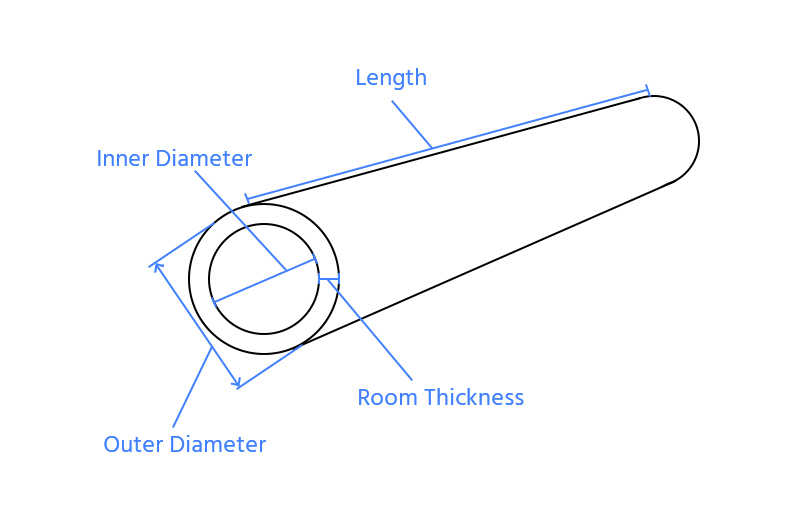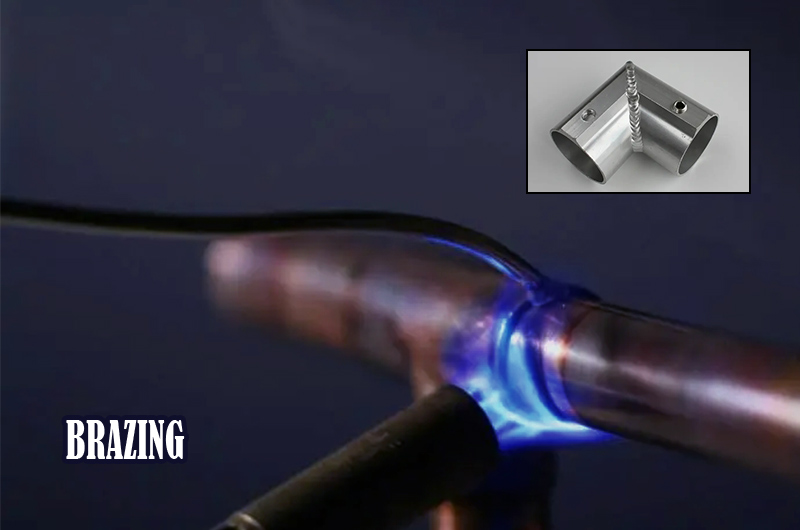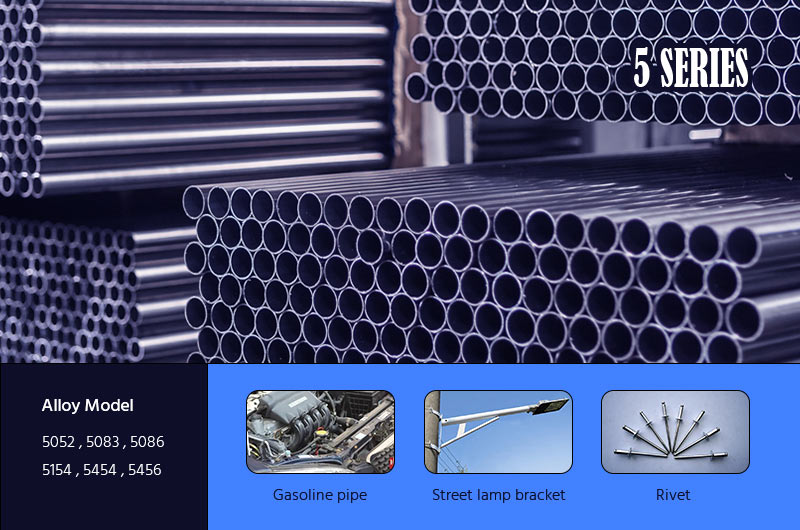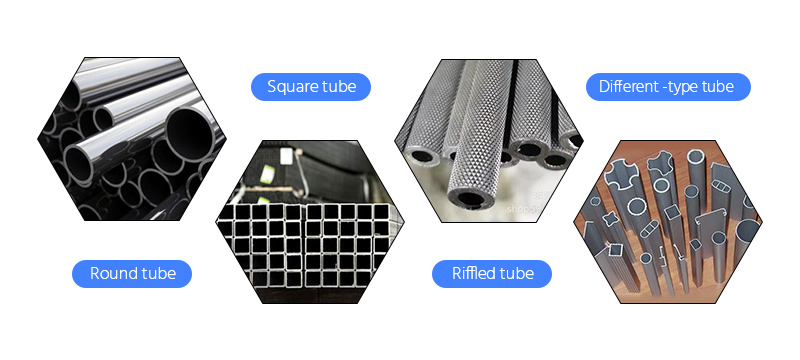Aluminum tubes are widely used in aerospace and commercial industries, including healthcare products, entertainment products and machine parts. Aluminum tubes are respected by many manufacturers for their durability. Because aluminum tubes have both strength and flexibility, many applications benefit from these properties of aluminum tubes.
What is aluminum tube
Aluminum tube is a kind of nonferrous metal tube, which refers to the metal tubular material extruded from pure aluminum or aluminum alloy to be hollow along its longitudinal full length. There can be one or more closed through-holes. The wall thickness and cross section are uniform. Aluminum tube products are delivered in straight lines or in rolls.
Aluminum tube structure
There are some basic measurements or key specifications when ordering our pipes.
- OD —— external diameter
- ID —— internal diameter
- Wall thickness
Because all tubes have two walls regardless of their shape. These two walls are combined with the inside diameter to provide an overall outside diameter measurement.

When ordering aluminum tube parts, a specific nomenclature is assigned to the part number.
Round tube:such as 2024-T3 TUBE 2.00 X .125.
Square tube:such as 7075-T6 TUBE 1SQ X .049.
Rectangular tube:6061-T6 TUBE 4.00 X 8.00 RECT (Note: wall thickness is not listed).
Two important characteristics of aluminum tube: bending and connection
Three Main Factors for Aluminum Elbow
1. Formability
Some aluminum alloys, such as 3000, 5000 and 6000 series, have higher formability than other aluminum alloys, making them good bending materials. Generally, alloys with higher formability have lower strength.
2. Thickness and Bending Radius
Like other metals, aluminum will appear "work hardening" during bending. This means that it will become stronger and stronger when formed. However, if ratio of radius to pipe thickness is too small, the material will be over machined and more likely to lose efficacy.
3. Rate of Elongation
Percentage of elongation is a way of describing the difference between the yield strength of a metal and its ultimate tensile strength. Yield strength is the point at which an aluminum alloy can be bent and no longer restored to its original shape. The greater the difference between these strengths, the better the formability of the alloy.
Connecting pipe usually means that one pipe is connected to another pipe or one end is connected to a container. Most commercially produced tubes can be equipped with connectors designed for specific types, shapes, and sizes of tubes.
Brazing and welding of aluminum pipe
Welding is to join metals by melting and fusing metals, with filler material be added. Fusion need to concentrate the heat directly at the joint, and the temperature must exceed the melting point of the metal and filler. Welded joints are usually as strong as the base material.

The difference between brazing and welding is that the temperature is much lower and does not melt the base metal. Instead, the heat source melts the filler metal and draws it into the joint through capillary action. It forms a metallurgical combination between the filler metal and the part surface.
As with welding, joint strength usually exceeds the strength of individual parts. For example, the tensile strength of stainless steel joints can exceed 130000 psi. However, due to the low brazing temperature, usually 1150 to 1600 ° F, most physical properties are not affected. Deformation and warping are minimized, which minimizes the stress in the joint area.
Common specifications of aluminum round pipe
The outer diameter of aluminum tube is generally about 4 to 300 mm, and its wall thickness is mostly between 0.25 and 40 mm. Common aluminum pipe specifications are φ twenty-five × 6, φ thirty × 4, φ thirty-two × 2.7, φ thirty-seven × 11, φ thirty-eight × 8, φ forty-three × 14 etc. There will also be difference among the specifications of different aluminum material types. For example, the wall thickness and outer diameter of thin-walled round aluminum tubes are mostly about 20 to 130 mm, and the outer diameter of thick walled round aluminum tubes are mostly about 15 to 160 mm.
Common series of Aiboer Technology tubes
1000 series aluminum pipe
The common alloy of 1000 series aluminum pipe: 1050, 1060, 1070.
1 series aluminum is industrial pure aluminum. It has high plasticity, corrosion resistance, electrical conductivity, thermal conductivity and other characteristics. But the strength is low, the heat treatment cannot be strengthened, and the machinability is poor. It can be used for gas welding, hydrogen atom welding and contact welding, but is difficult to braze. 1 series aluminum is easy to bear various pressure processing, extension and bending.
2000 series aluminum pipe
The common alloy of 2000 series aluminum pipe: 2014, 2017, 2024, 2A12, 2219, 2A11, 2A14, 2A50.
2 series aluminum alloy has good machinability and good performance of contact welding, spot welding and roll welding. However, the performance of electric arc welding and gas welding is poor. It can be strengthened by heat treatment and has extrusion effect.
It is applied to occasions requiring high strength and hardness (including high temperature), such as aircraft heavy, forgings, thick plates and extruded materials, wheels and structural elements, first stage fuel tank of multistage rocket and spacecraft parts, truck frame and suspension system parts, etc.
3000 series aluminum pipe
The common alloy of 3000 series aluminum pipe: 3003, 3A21.
This kind of aluminum tube has good formability, dissolution and corrosion resistance.
It is used for processing parts with good formability, high corrosion and weldability. It can also be applied to work applications that require both these properties and higher strength than 1000 series alloys.

Kitchenware, food and chemical product handling and storage devices, slot and tanks for transporting liquid products, various pressure vessels and pipes processed with thin plates, radiator, vanity board, photocopier drum, marine materials.
5000 series aluminum pipe
The common alloy of 5000 series aluminum pipe: 5052, 5083, 5086, 5154, 5454, 5456.
The 5 series aluminum pipe is the Al-Mg series alloy. It is the most widely used antirust aluminum. This alloy has high strength, especially the fatigue strength: high plasticity and corrosion resistance, can not be strengthened by heat treatment. The plasticity is good in semi-cold work hardening, but low in cold work hardening. Good corrosion resistance, good weldability, poor machinability, and polishable.

It is mainly used in occasions requiring high plasticity and good weldability. Low load parts working in liquid or gas medium, such as oil tank, gasoline or lubricating oil pipe. Various liquid containers and other small load parts made by deep drawing, such as wire rods are used to make rivets. It is also commonly used for sheet metal parts of traffic vehicles and ships, instruments, street lamp brackets and rivets, hardware products, electrical enclosures, etc.
6000 series aluminum pipe
The common alloy of 6000 series aluminum pipe: 6005, 6105, 6041, 6042, 6061, 6351, 6082, 6162, 6262, 6064, 6063, 6066, 6A02
6005 aluminum tube is a high-quality aluminum alloy product produced by heat treatment and pre-stretching process. Its strength cannot be compared with that of series 2 or 7, but it has many characteristics of magnesium and silicon alloys. It has excellent processing performance, excellent weldability and galvanicity, good corrosion resistance, high toughness and no deformation after machining, the material is dense and free from defects, easy to polish, easy to color film, excellent oxidation effect, and some other excellent features.

6 series aluminum tubes are generally used in electronic appliances. It is mainly used in various fields such as bus, stringing, conductors, electrical components, refrigerators, air conditioners, cables.
Representative applications include aerospace fixtures, electrical fixtures, communications, etc.
7000 series aluminum pipe
The common alloy of 7000 series aluminum pipe: 7050, 7075, 7178, etc.
Temper: T6, T651.
Standard: GB, GJB, ASTM, EN.
Aviation super hard aluminum alloy, with high strength and good wear resistance.
7050 is a high strength heat treatable alloy. It is a kind of aviation super hard aluminum alloy, with high strength and good wear resistance. It has extremely high strength and resistance to peeling corrosion and stress corrosion cracking. It is commonly used in aircraft structural parts for medium and thick plate extrusion parts, free forging parts and die forgings.
Four classification methods of aluminum tubes
By shape: square tube, round tube, embossed tube, profiled tube, globe aluminum tube.

By extrusion method: seamless aluminum tube and ordinary extruded tube.
By precision: ordinary aluminum tube and precision aluminum tube.
Precision aluminum tubes generally need to be re-processed after extrusion, such as cold drawing, fine drawing and rolling.
By thickness: ordinary aluminum tube and thin-walled aluminum tube.
Two kinds of surface treatment methods for Aiboer Technology tube
Chemical treatment: Oxidation, electrophoretic coating, fluorocarbon coating, powder coating, wood grain transfer printing.
Mechanical treatment: mechanical drawing, mechanical polishing, sandblasting.

Common problems of aluminum tube
What is aluminium tube used for?
How strong is aluminum tubing?
Is aluminum tubing cheaper than steel?
What is the difference between aluminum pipe and aluminum tube?